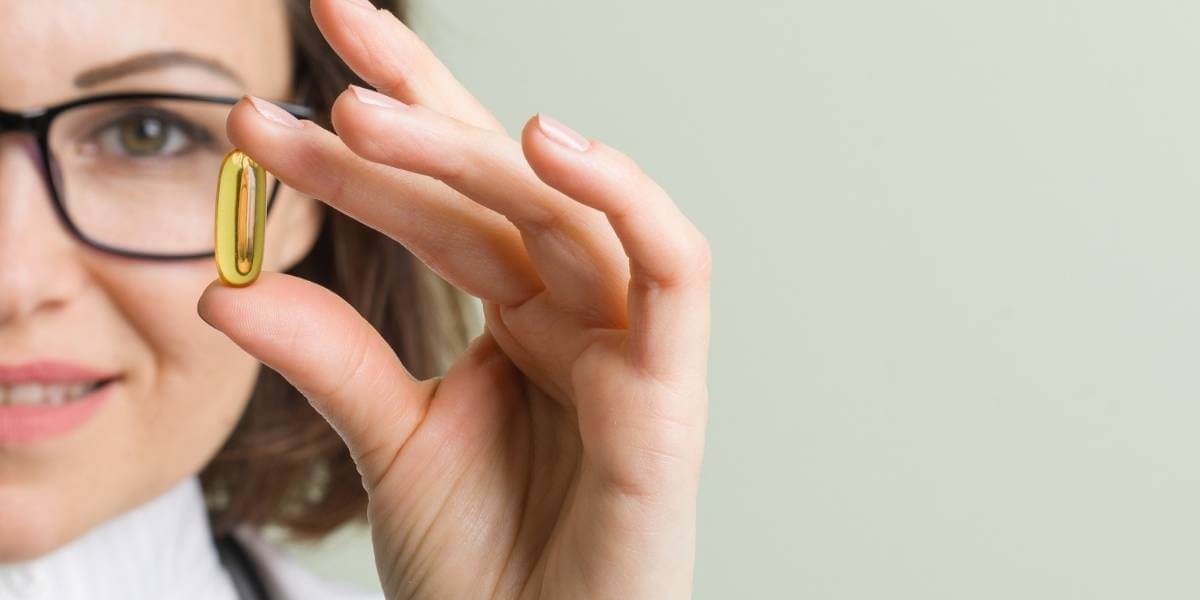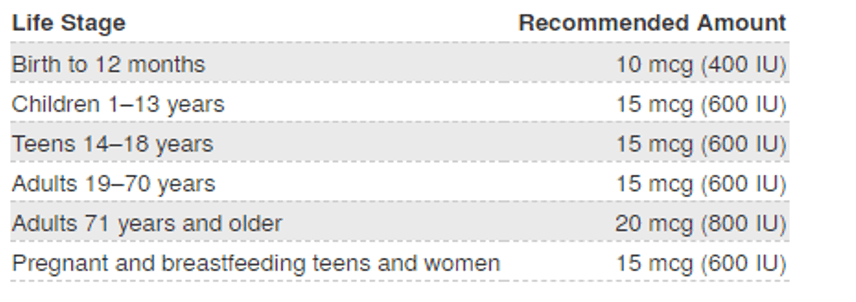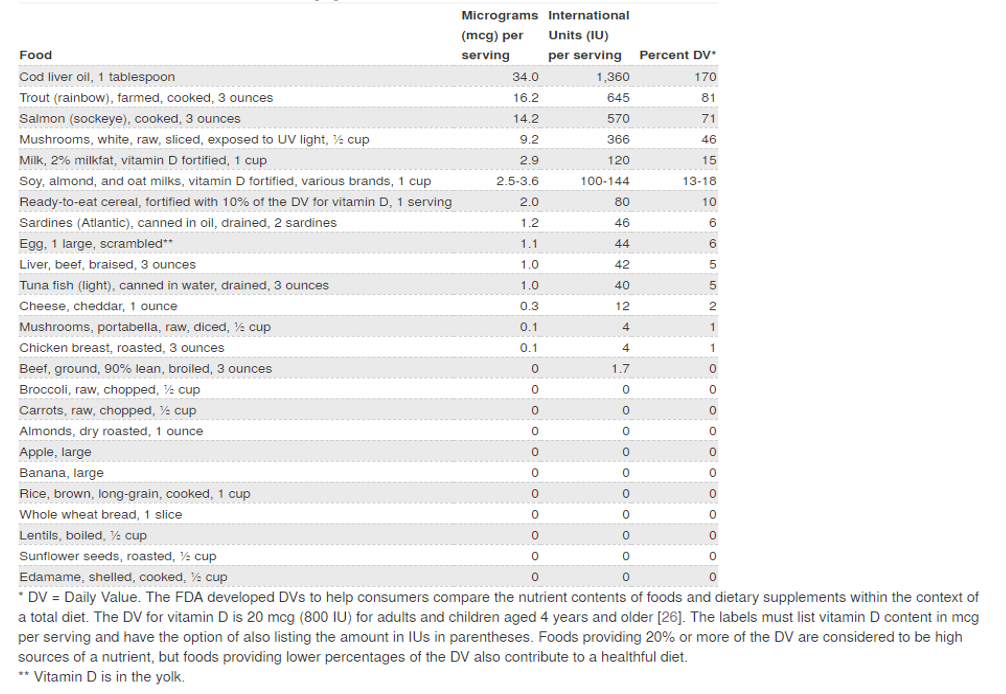Look at any food package. You’ll realize that manufacturers treat added vitamins as the essence of what makes their products better than those of their competitors. This is because vitamins have a crucial role in sustaining a healthy body.
One of the essential vitamins needed by the body is vitamin D. Vitamin D is mainly responsible for helping the gut absorb calcium, which has a fundamental role in the development of muscles and bones [1].
Notwithstanding the vital role played by vitamin D, “Most people in the United States consume less than the recommended amounts of vitamin D” [1]. This is also the case globally. It is estimated that more than one billion people have low levels of vitamin D in their blood [2].
To ensure that people in England get sufficient vitamin D, Public Health England (PHE) introduced some guidelines advising everyone to supplement vitamin D, especially during winter [3].
This article summarises the PHE guidelines on vitamin D. It will also focus on some of the frequently asked questions about Vitamin D.
Table of Contents
What Is Vitamin D?
Before we summarise the new PHE guidelines on vitamin D, let’s take some time to know more about vitamin D. Vitamin D is also called calciferol.
According to the School of Public Health at Harvard University, “Vitamin D is both a nutrient we eat and a hormone our bodies make.” The School of Public Health adds that vitamin D “is a fat-soluble vitamin that has long been known to help the body absorb and retain calcium and phosphorus; both are critical for building bone” [4].
The Harvard University’s School of Public Health also reports that laboratory studies have concluded that vitamin D has the potential to slow down cancer cell growth. The same school also says that many tissues and organs in the body have vitamin D receptors, showing that the vitamin has a crucial role beyond bone health [4].
Vitamin D Supplements Are Necessary For Everyone
The new guidelines are a departure from previous advice that was based on the understanding that “since vitamin D is synthesized in the skin when it is exposed to sunlight, … dietary intakes of vitamin D were not necessary for most of the UK population (aged 4-64y)” [6].
As new evidence became available, the SACN said that “the recommended dose of vitamin D is 10 micrograms (400 International Units (IU)) per day.” The scientific body says that individuals don’t need to exceed this recommended dose. However, for those who cannot find vitamin D supplements that can provide them with 10 micrograms, the advice is that they should get their dose from “products providing up to 25 micrograms” [3].
Mainly, the new PHE recommendations are based on the understanding that most people make vitamin D from sunlight in the summer. However, during the English autumn and winter months (October to March), it is not always possible to make enough vitamin D from the sun. Therefore, the advice is that everyone should take vitamin D supplements in the months leading to the winter and during the winter.

At-Risk Groups Advised To Take Vitamin D Supplements In All Seasons
Even though most people are expected to make enough vitamin D from the sun during the summer, the PHE recognises that this is not always the case. Many people stay away from the sun in the summer because it is too hot to be outdoors.
Certain groups, like those with dark skin, people in care homes, those who spend most of their time indoors, and individuals that cover most of their skin when outdoors, may also not be getting adequate quantities of vitamin D from sunlight. The new recommendations advise that such people should be taking vitamin D supplements throughout the year [3].
Related article: When is the best time to take vitamins?
Guidance On Vitamin D For Covid-19
In response to reports that vitamin D could lower the risk of long-term health complications triggered by Covid-19, PHE advises that there is still no evidence to support this view. However, studies are still being conducted to test the claim.
In a statement published on November 28, 2020, PHE says, “As yet, there is insufficient evidence to prove that it [vitamin D] helps people respond to COVID-19, but as more evidence is accumulated, our understanding may change.” Adding, “In the meantime, people should follow the current UK government advice on vitamin D supplementation to maintain bone and muscle health” [3].
The UK government is taking vitamin D’s potential in preventing or treating Covid-19 seriously. In an article published by The Guardian, Mattha Busby reports that “Vitamin D has moved a step closer to being used as a potential way to prevent and treat coronavirus after Matt Hancock [The British Secretary of State for Health and Social Care] asked government health advisers to produce new guidelines on its use” [7].
Why Is Vitamin D Important?
What makes vitamin D so crucial that PHE had to come up with specific guidelines on how much vitamin D individuals should take? According to the American nonprofit academic medical center ClevelandClinic.org, vitamin D is crucial for the absorption of calcium in the body. Calcium helps the body build strong bones, preventing adverse conditions like rickets in children and osteomalacia (soft bones) in adults [8].
The online medical information outlet, MedicalNewsToday.com lists other reasons vitamin D is vital to health [9]:
- Supporting the health of the brain and the nervous and immune systems.
- Supporting diabetes management by regulating insulin levels.
- Promoting cardiovascular health by supporting lung function.
- Impacting gene expression in the development of cancer.
How Much Vitamin D Do You Need?
Now that it’s clear that vitamin D plays a crucial role in maintaining a healthy body, how much is considered enough? The answer lies in the PHE recommendations: “10 micrograms (400 IU) of vitamin D a day between October and early March to keep your bones and muscles healthy” [3].
The National Institute of Health’s Office of Dietary Supplements suggests that your age determines the amount of vitamin D you need. It recommends the following amounts for different life stages [1].

To get an idea of what the measures above mean in everyday life, let’s look at what mcg and IU stand for. The microgram (mcg) represents a millionth of a gram. Suppose a quarter of a teaspoon of sugar weighs 1 gram. In that case, you need to imagine it divided a million times to get an idea of the size of a microgram. The International Unit (IU) represents a unit of measure for soluble vitamins like vitamin D. Converting IU to mcg depends on the nutrient in question.
What is Vitamin D Deficiency?
ClevelandClinic.org says that the idea of vitamin D deficiency indicates that an individual does not have sufficient vitamin D in their blood. The same source says that “Vitamin D is unique because your skin actually produces it by using sunlight.” Adding, “Fair-skinned individuals and those who are younger convert sunshine into vitamin D far better than those who are darker-skinned and over age 50” [8].
A paper published by the UK’s NHS-run Wirral University Teaching Hospital lists other groups at risk of vitamin D deficiency [11]:
- Infants below the age of five.
- Pregnant and breastfeeding women, especially the young ones.
- Women with multiple short-interval pregnancies.
- Individuals that use sunscreen and those that conceal most of their skin when outdoors.
- People on vegan or vegetarian diets.
What Are The Symptoms And Health Risks Of Vitamin D Deficiency?
Even though vitamin D is mainly associated with bone health, people affected by vitamin D deficiency show some common symptoms that may look unrelated to bones. MedicalNewsToday.com lists some of the common symptoms for people living with vitamin D deficiency [9]:
- Regular sickness or infection
- Fatigue
- Bone and back pain
- Low mood
- Impaired wound healing
- Hair loss
- Muscle pain
The same source says that if vitamin D deficiency goes untreated for a long time, the risk of other complications becomes higher. Such complications include infections, specific types of cancers, cardiovascular conditions, neurological diseases, and autoimmune disorders.
What Are The Causes Of Vitamin D Deficiency?
According to the National Institutes of Health’s Office of Dietary Supplements, “People can develop vitamin D deficiency when usual intakes are lower over time than recommended levels, exposure to sunlight is limited, the kidneys cannot convert 25(OH)D to its active form, or absorption of vitamin D from the digestive tract is inadequate” [1].
It has also been noted that obesity can affect vitamin D levels in the body. The American publisher of information about human well-being and health, WebMD.com, reports that fat cells can extract vitamin D from the blood, changing how the vitamin is released into circulation. This could be the reason “People with a body mass index of 30 or greater often have low blood levels of vitamin D” [10].
Treating Vitamin D Deficiency
The great news is that once vitamin D deficiency has been diagnosed through a blood test by your doctor, it can be treated. Whether you want to treat vitamin D deficiency or prevent it, your goal should be to maintain high levels of the vitamin in your blood.
There are two ways of getting the levels of vitamin D recommended by PHE: sunlight and diet.
Sunlight plays a vital role in determining the levels of vitamin D in the blood. The body produces vitamin D when exposed to ultraviolet B (UV-B) radiation emitted by the sun. How well your skin will produce vitamin D depends on the season, time of day, location, and how dark your skin is [8].
Apart from sunlight, vitamin D can also be obtained from your diet. However, ClevelandClinic.org warns that “Vitamin D doesn’t occur naturally in many foods,” which is “why certain foods have added vitamin D” [8]. The same organization notes that it is more challenging for lactose-intolerant people or vegans to get vitamin D from their diet—the reason such people need supplements.
Examples of excellent food sources for vitamin D include fatty fish, beef liver, mushrooms, cheese, egg yolks, fortified milk, and other fortified drinks. Fortified foods or beverages are those that have added vitamins and minerals.
The screenshot below from the National Institutes of Health website presents a table showing the vitamin D content of selected foods [1]:

Click here to find out why healthy eating and proper nutrition are important.
Effects Of Too Much Vitamin D
While vitamin D is highly crucial for good health, the vitamin could accumulate to toxic levels when you take too much of it. Even though it’s rare for people to end up with too much vitamin D from either sunlight or their diet, an overdose of vitamin supplements could result in adverse effects.
The provider of health information, Healthline.com, identifies some side effects of taking too much vitamin D [12]:
- Nausea, vomiting, and poor appetite
- Stomach pain, constipation, or diarrhea
- Bone loss
- Kidney failure
Getting Adequate Levels Of Vitamin D
It’s not always possible to know whether you’re getting the right amount of vitamin D from sunlight or your diet. The good news is that you can prevent vitamin D deficiency by taking supplements. However, it is still important to always be conscious that securing adequate vitamin D levels in your blood is a multi-pronged effort involving getting enough sunlight, eating the right foods, and taking quality supplements.
New Vitamin D Guidelines From Public Health England
The new PHE guidelines on Vitamin D were introduced in 2016. This was after the Scientific Advisory Committee on Nutrition’s (SACN) review of available scientific conclusions and the vitamin D recommendations that existed then. The SACN is a committee made up of independent health, diet, and nutrition experts that advise the government [5].
💬 Something on your mind? Share your thoughts in the comments. We love hearing from curious minds.
📩 And while you’re here, join our newsletter for more smart stuff (and secret perks)!
References
[1] National Institutes of Health. (2014). Vitamin D. https://ods.od.nih.gov/factsheets/VitaminD-health%20Professional/#en1
[2] Franziska Spritzler. (2018). 8 Signs and Symptoms of Vitamin D Deficiency. Healthline. https://www.healthline.com/nutrition/vitamin-d-deficiency-symptoms
[3] Public Health England. (2020). Guidance Statement from PHE and NICE on vitamin D supplementation during winter. https://www.gov.uk/government/publications/vitamin-d-supplementation-during-winter-phe-and-nice-statement/statement-from-phe-and-nice-on-vitamin-d-supplementation-during-winter
[4] Harvard University School of Public Health. (2020). Vitamin D. https://www.hsph.harvard.edu/nutritionsource/vitamin-d/.
[5] British Nutrition Foundation. New advice on vitamin D. https://www.nutrition.org.uk/nutritioninthenews/new-reports/983-newvitamind.html
[6]. Scientific Advisory Committee on Nutrition. (2016). Vitamin D and Health. https://assets.publishing.service.gov.uk/government/uploads/system/uploads/attachment_data/file/537616/SACN_Vitamin_D_and_Health_report.pdf
[7] Mattha Busby. (2020). Covid: UK government requests guidance on vitamin D use. https://www.theguardian.com/world/2020/nov/14/covid-uk-government-requests-guidance-on-vitamin-d-use.
[8]. Cleveland Clinic. (2021). Vitamin D Deficiency. https://my.clevelandclinic.org/health/articles/15050-vitamin-d–vitamin-d-deficiency.
[9] Megan Ware. (2019). What are the health benefits of vitamin D? https://www.medicalnewstoday.com/articles/161618.
[10] Christine Mikstas. (2020). Vitamin D Deficiency. https://www.webmd.com/diet/guide/vitamin-d-deficiency#2
[11] Abigail Cowan, Rachael Pugh, and Aileen McCaughey. (2020). https://mm.wirral.nhs.uk/document_uploads/guidelines/Vitamin%20D%20Guidelines%20for%20Adults%20v2.pdf
[12] Franziska Spritzler. (2019). 6 Side Effects of Too Much Vitamin D. Healthline. https://www.healthline.com/nutrition/vitamin-d-side-effects




